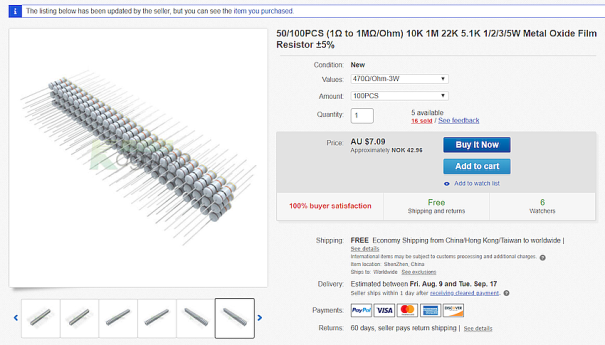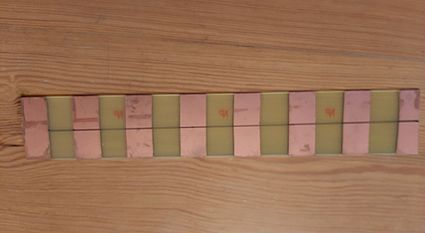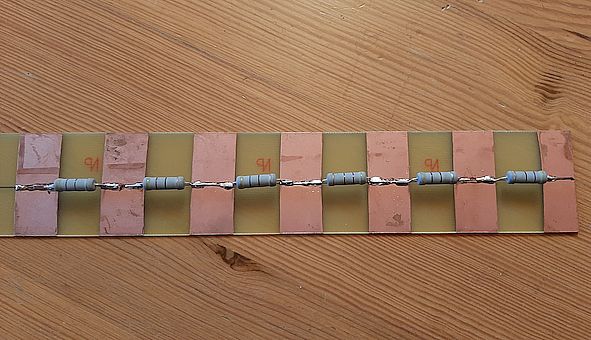The W4RNL PDF decribes a resistor of 800-900 ohm.
After doing some exercises in a excel spreadsheet I found that a serial parallel combination of 12 in series by 7 in parallel will give a resistor of 805,7 ohm.
In the beginning I considered using SMD resistors but found it a bit troublesome to get the resistors and would also have to design and get manufactured a PCB for the resistors.
Instead I decided to go for regular axial resistors. I found a supplier on E-bay that sold 3W 470ohm 5% resistors in bags of 100 for a reasonable price.

To mount the resistors I decided to make PCB. To simplify the manufacturing of the PCB I went for the quick and dirty method of doing the layout. I measured the length of the resistor body 17 mm and rounded that up to 20mm. Two strips of PCB 45mm wide and 300 mm long where cut.

The I used 3M 33+ electricians tape and masked of the with of the tape every 20 mm. The PCB where etched in a FeCl solution, it where a bit time consuming because the etching solution where not at the optimum temperature. In the end I had to make two boards to tit all resistors because of the length of enchant tank and size of the available PCB material.
I bent 84 resistors in the shape of a top hat like showed in the picture.

To get the resistors reasonable aligned I made a line along the center of the PCB lengthwise and soldered six resistors on top of the line. This would make it simple to just solder 3 on each side.

After about an hour of soldering and bending resistors I ended up with one of these and in about another hour I had two of these.
